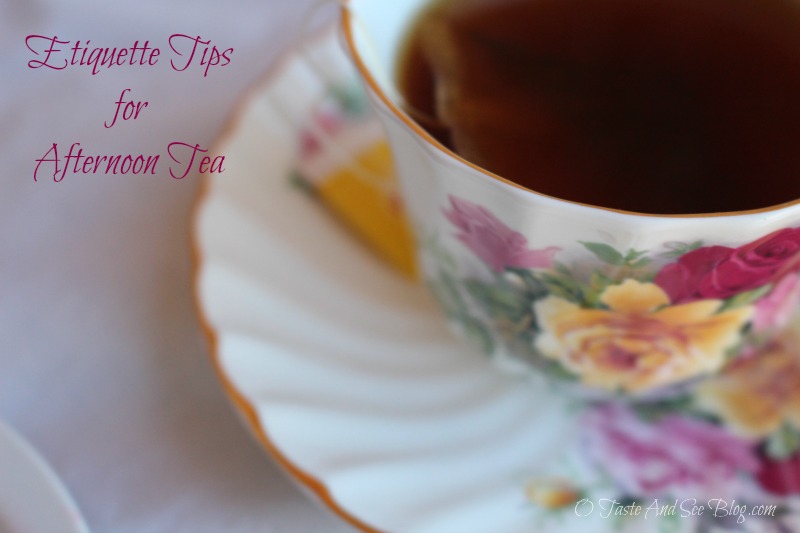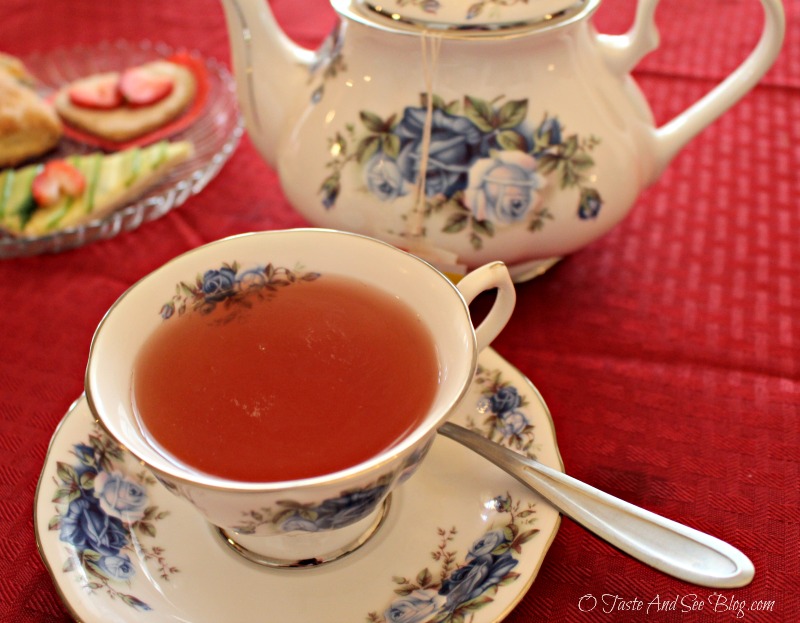
Etiquette Tips for Afternoon Tea

Recently, the girls and I hosted a Valentine’s Day Afternoon Tea. I shared with you last week how we planned it. Today I’m sharing the history and proper etiquette for an Afternoon Tea.
Although tea houses can be found here in the U S, “taking tea” is traditionally British. Sometimes, when one culture adopts a tradition from another, things get changed. I wondered if this has been the case with the tradition of Tea. In doing some research I found that, in deed, it has.
Some of our “misconceptions” include High Tea vs Afternoon Tea.
What’s the difference between an Afternoon Tea and a High Tea?
Our idea:
Afternoon Tea: A casual event where friends sip tea and eat snacks.
High Tea: A formal affair, enjoyed by the upper class

The Real Story:
Typically, Afternoon Tea is served between 2 and 4 pm. It was started in the early 19th century by Anna, 7th Duchess of Bedford, because she became hungry between breakfast and dinner, which wasn’t served until about 8 pm. Her answer was a light snack and a pot of tea. It caught on and became a popular social event for the upper class. Typically, Afternoon Tea consisted of three “courses”: Finger Sandwiches, Scones and Sweets.
However, the lower class, who worked long hours and couldn’t afford extra tea, would arrive home around 6 pm, famished. Wanting a large meal (we might call it dinner) they would have “High Tea”, which was more substantial less. Surprisingly, the name came not from the formality as we might think, but from the height of the table where it was served. High Tea was served at a high table, like our dining tables and low tea or afternoon tea (which would have been more formal), from more comfortable chairs at lower tables, like a coffee table.
Along with some of our ideas about Afternoon Tea, I found we typically “violate” a few etiquette rules as well…
10 Etiquette Tips for Afternoon Tea:
Placing the Napkin – The napkin should be folded in half and placed in the lap with the fold toward you
Pouring the Tea– When with other people, offer to pour theirs first. If you like milk in your tea, pour tea first then milk second. *Very important note here (not really etiquette but good to know): Never add milk to a tea containing citrus, the milk will curdle.
Cup and Saucer – When sipping tea, do you pick up only the cup or the cup and saucer? Well, the height of the table determines what’s proper. If seated at a low table, both should be picked up to drink. If seated at a high table the cup alone may be picked up.
NO Little Finger! – It is, in fact, NOT proper etiquette to hold a tea cup with the little finger out. The thumb and forefinger should be used to hold the handle. The bottom of the handle should rest on the middle finger with the ring and little finger tucked under.
Stirring Tea – Tea should never be stirred in a circular motion. This causes sugar cubes to simply circle around in the cup. Rather, stir back and forth, which “crushes” the cube and allows it to dissolve. NEVER, NEVER, NEVER clang the spoon as you stir OR tap on the side of the cup when finished stirring. Place spoon beside the cup on the saucer when finished.
Elbows OFF the Table! – Of course, this is just good manners for any meal. Hands in your lap when not using them.
Preparing Your Scone – First, if scones are in front of you, offer them round the table before taking one yourself. Second, (and the British are pretty serious about this one) it’s NOT an American biscuit. Never turn on its side and saw it open with your knife! Hold the top with one hand and the bottom in the other and gently pull apart.
Cream and Jam or Jam and Cream? – Use the serving utensils to put cream and jam on the side of your plate (never directly on top of your scone) then add them to your scone with your knife. As far as order…. it doesn’t matter, whichever you like can go on first.
No “Burgers” – Again, it’s NOT an American biscuit so don’t place the top and bottom back together and make a “burger” out of it. Scones are to be eaten with the fingers, one half at a time.
Enjoy Your Tea!
These tips come from a lovely English lady from The English Cream Tea Company. I thought you might enjoy seeing the video.
